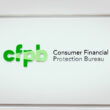A brand promise is powerful. It articulates what customers can expect from their interaction with your company. Every brand has one. Ideally its one you create and want to own. Developing your promise takes a process.
Your brand is an intangible asset that should contribute to your organization’s value creation. Your brand is more than the name of a product. It is a sensory, emotive & cultural proprietary image surrounding a company or product that provides an assurance of quality and serves as a significant source of competitive advantage and future earnings. A brand implies a promise of performance.
It is anything (e.g. name, symbol, or design) that you use or intend to be used in commerce to identify and distinguish the PROMISE associated with goods, services, or organizations; and indicates the source of that promise. Everything you do and every way you communicate reflects on your brand. From your business cards and website, to your product packaging and user interface, to your customer care and accounting practices.
Take Charge of Your Brand
A brand promise is not a tagline. It delineates what the customers can expect from giving their business to you. To begin to develop your brand promise you will need to have at the very least a clear understating of:
- Your value proposition
- The value of your brand to the market place
- How well you deliver on your commitments to customers
Your brand promise answers the question, “What it is we do better and different from anyone else in our category that is valued by your targets and customers?”
Employ Four Steps in Your Brand Strategy Process
Many companies spend a tremendous effort on generating leads and pipeline coverage. This same level of effort needs to go into your brand strategy. The strength of your brand significantly impacts your demand generation success. Without a brand strategy all you have is a solution you’re selling. Without a brand strategy you’re left compete on price and terms and conditions.
When you’re not in charge of your brand, the market will define your brand. Even if you haven’t created and managed your brand strategy, your customers and prospects have some words or images they associate with your company and products. Whether by design or not, the words your customers and prospects associate with your business is your brand. If these words aren’t what you convey with your brand, then it’s time to take chart. This will require you to invest effort into a brand strategy and focus on marketing initiatives to clarify your brand promise, differentiate your brand from the competitive set, determine a brand experience, and create brand awareness.
Brands take time to develop, so be patient. It takes time for the market to “get it.” Often companies, decide to “re-brand” because they are impatient. Stay the course.
Here are four initial steps you can take to start your brand strategy process:
- Clarify how your product(s)/service(s) meet a specific customer need
- Identify your differential advantage. Customers must be able to differentiate the offer from competitors
- Make the brand discernable. Focus on creating value-add attributes associated with the brand
- Give the brand emotional associations that impact confidence, status, preference
Developing a brand strategy and creating a brand promise most likely requires some research, otherwise you’re just guessing. Conduct research to gain insight into your customers’ expectations, the input needed to understand your current promise and whether this is the one you want to make.
The purpose of a brand strategy is to impact repeat purchase and customer loyalty. Research is essential to understand what makes a customer chose a brand again and again. Once you know what customers value and develop your promise, you will need to bring it life in a way that differentiates your organization from competitors and articulates to everyone in the value chain (employees, suppliers, partners) how they will need to behave to deliver on the promise.
This is the foundation for your brand strategy. A brand promise will be meaningless unless it is translated into action and everyone in the value chain is empowered to deliver on the promise.









